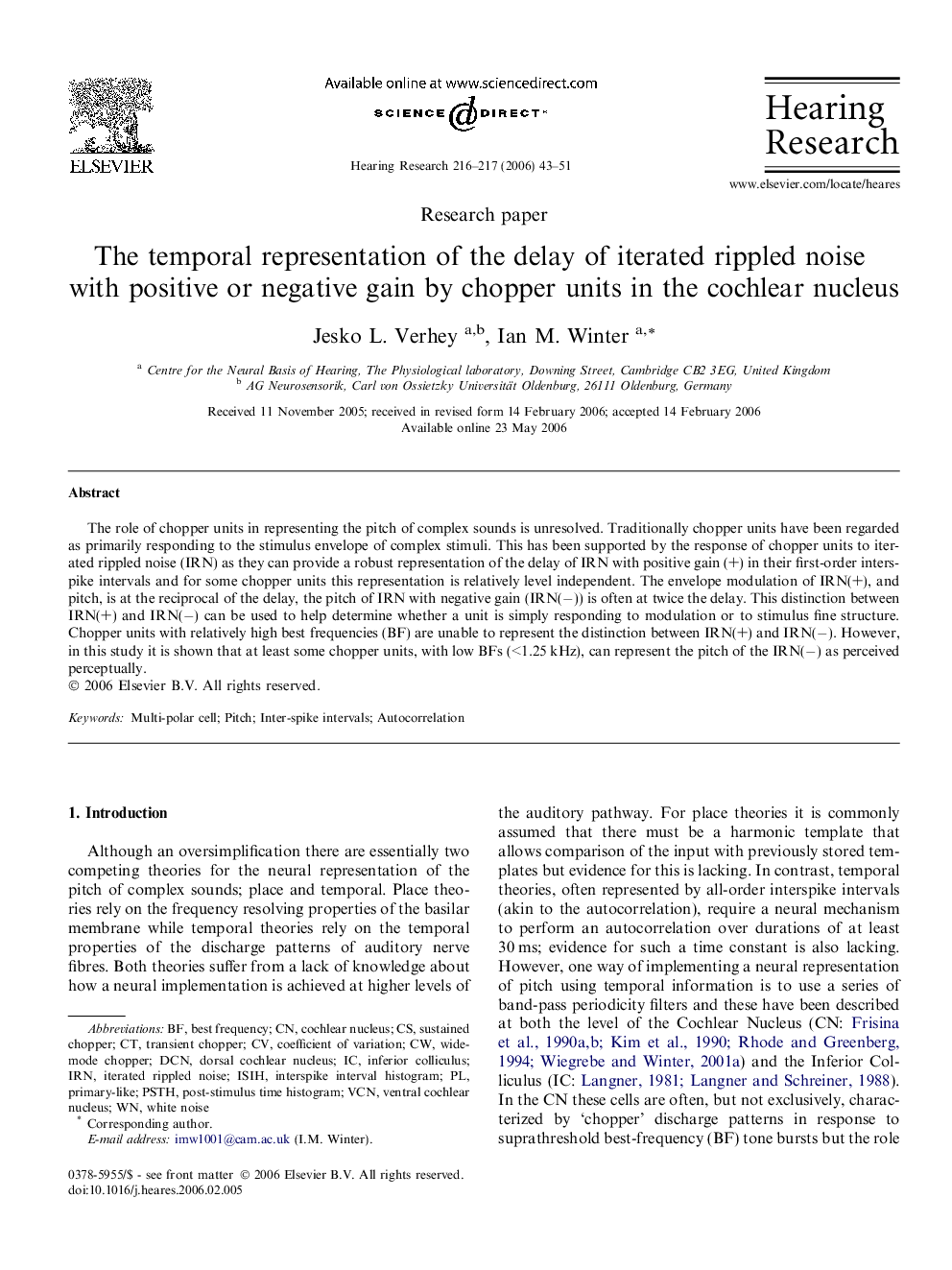| Article ID | Journal | Published Year | Pages | File Type |
|---|---|---|---|---|
| 4356428 | Hearing Research | 2006 | 9 Pages |
The role of chopper units in representing the pitch of complex sounds is unresolved. Traditionally chopper units have been regarded as primarily responding to the stimulus envelope of complex stimuli. This has been supported by the response of chopper units to iterated rippled noise (IRN) as they can provide a robust representation of the delay of IRN with positive gain (+) in their first-order interspike intervals and for some chopper units this representation is relatively level independent. The envelope modulation of IRN(+), and pitch, is at the reciprocal of the delay, the pitch of IRN with negative gain (IRN(−)) is often at twice the delay. This distinction between IRN(+) and IRN(−) can be used to help determine whether a unit is simply responding to modulation or to stimulus fine structure. Chopper units with relatively high best frequencies (BF) are unable to represent the distinction between IRN(+) and IRN(−). However, in this study it is shown that at least some chopper units, with low BFs (<1.25 kHz), can represent the pitch of the IRN(−) as perceived perceptually.
